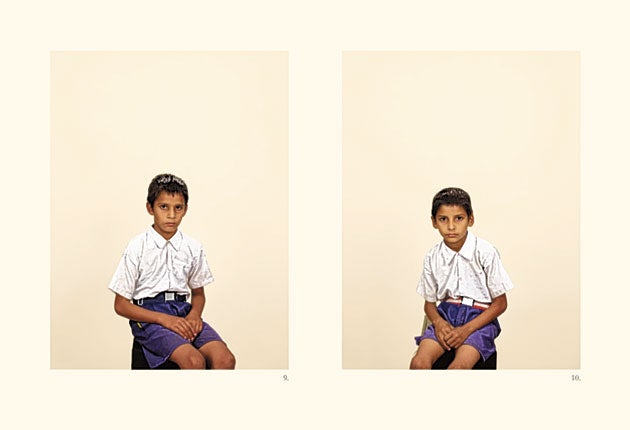Taryn Simon, Tate Modern, London
Family life reveals its true face

Your support helps us to tell the story
From reproductive rights to climate change to Big Tech, The Independent is on the ground when the story is developing. Whether it's investigating the financials of Elon Musk's pro-Trump PAC or producing our latest documentary, 'The A Word', which shines a light on the American women fighting for reproductive rights, we know how important it is to parse out the facts from the messaging.
At such a critical moment in US history, we need reporters on the ground. Your donation allows us to keep sending journalists to speak to both sides of the story.
The Independent is trusted by Americans across the entire political spectrum. And unlike many other quality news outlets, we choose not to lock Americans out of our reporting and analysis with paywalls. We believe quality journalism should be available to everyone, paid for by those who can afford it.
Your support makes all the difference.The American photographer Taryn Simon is known for her photographs that create unnerving or strange indexes to the world. For a past project she spent five days around the clock at JFK airport photographing seized contraband goods (including guns, hair irons andguinea pig meat). A 2009 work, An American Index of the Hidden and Unfamiliar, saw her photographing places and scenes usually out of sight in America: a labiaplasty, the CIA art collection.
The opening of this new show was attended by a cluster of celebrities including Gwyneth Paltrow (the artist is married to her brother), Steven Spielberg and Cameron Diaz. Glamorous indeed, but Simon's projects are laborious, politically complex and fraught with difficulty. For a Living Man Declared Dead and Other Chapters, which she has been working on for four years, Simon has been photographing the descendents of 18 different bloodlines, each based around a particular situation or narrative that the inheritance somehow expresses. On view are large framed grids of many faces, each individual photographed in front of a flat buff background. There are many blank photographs standing in for those who couldn't be photographed. These grids are accompanied by a group of other photographs (a "footnote" panel) – landscapes and other evocative scenes.
There are 18 of these sets (or "chapters"). The one that gives the work its title is the story of Shivdutt Yadav, of Uttar Pradesh, India, who discovered that he and members of his family had been listed as dead and the ownership of their land transferred to other relations. That they are very much alive has been documented by Simon. Among the images on the footnote panel is something horrific, yet almost beautiful. A body, dead from leprosy floats in the Ganges – the body bleached white, the eyeballs pale and swollen, the face turned black with blood.
Presented in a way that is reminiscent, aesthetically, of encyclopaedias, our eyes are tempted to skim over these images. Individual scenes leap out, however: the floating body described above; an awkward portrait shot; the tightly packed, florally decorated rooms of Ukrainian orphanages. There were moments I wished I was looking at these images separately, perhaps on a larger scale. That they are locked together in a frame is, however, a statement from the artist about the complexity of each situation – the people, the images and stories, cannot be separated from one another.
To 6 November (020 7887 8888)
Join our commenting forum
Join thought-provoking conversations, follow other Independent readers and see their replies
Comments